The Best Backyard Birding Tips for Small Spaces
Updated: Feb. 15, 2024
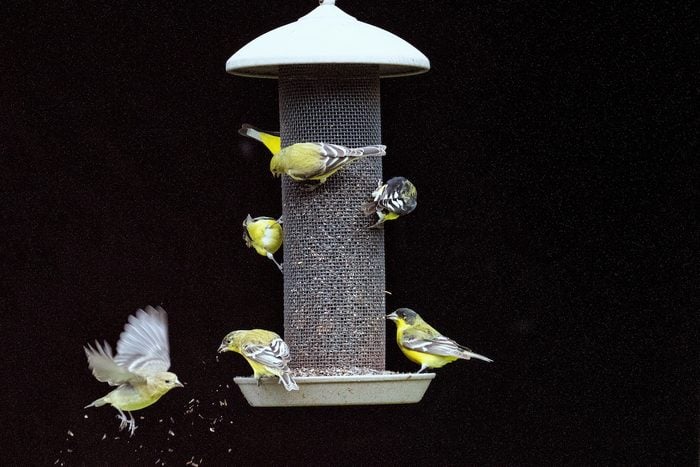
With a little planning and some basic backyard birding tips from our experts you can attract and feed birds—no matter where you live.
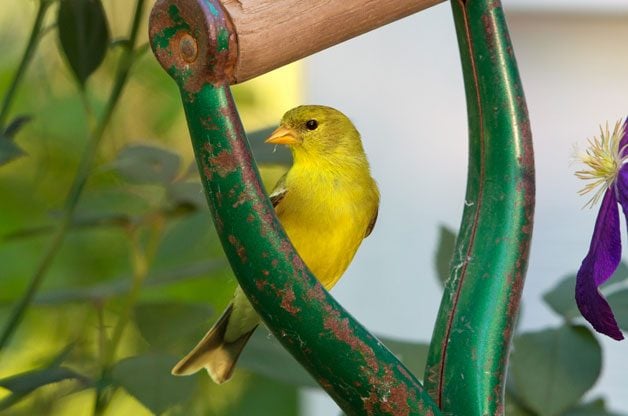
Even if you have just 100 square feet and not a 100-acre backyard, you can still attract birds. With small spaces, though, you’ll need to maximize your backyard birding opportunities. This can take planning, but the key points remain the same. Birds need the habitat basics of food, water and shelter. If you provide these three essentials, the visitors will come—no matter where you live or how big your space.
Maximize Space With a Variety of Bird Feeding Options
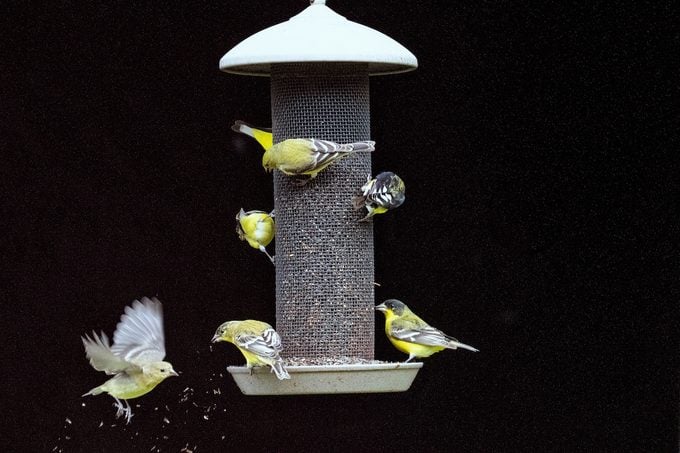
Be patient when you first put out a feeder. It can take the birds quite a while before they feel comfortable around a new one. After the first birds start using it, others will be quick to take notice.
There are endless varieties of birdseed out there, but start with the basics when you have limited space. Thistle is an especially popular seed for American goldfinches, pine siskins and redpolls, with the bonus of being less attractive to squirrels. A thistle (Nyjer) tube feeder is a great choice for a small backyard.
Black-oil sunflower seed is the pizza of bird food: Nearly everyone in the backyard will enjoy it. You can offer other quality seeds like safflower or even peanuts to satisfy other birds.
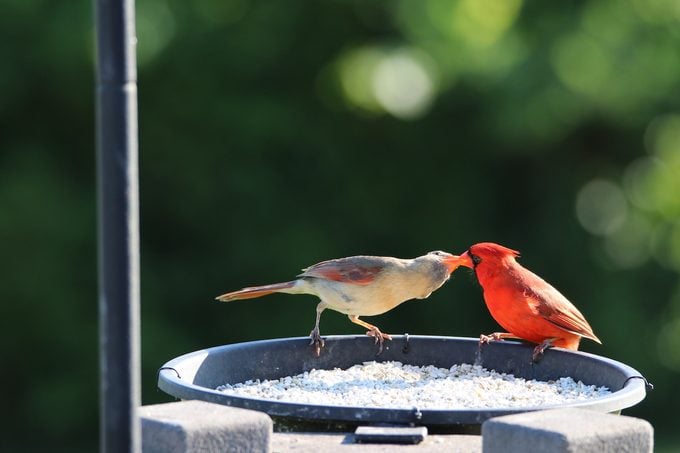
Another way to enhance your backyard birding experience is to offer different styles of bird feeders. While many species will readily perch at tube feeders, others will prefer a larger platform to sit on. You can hang feeders almost anywhere; try a hook that hangs from the branch of a tree. Mount feeders along a porch railing. You can also plant an arch in the ground and make your own feeding station.
Resist the urge to place a feeder in the center of your backyard, where the birds will have no shelter. Instead, put up multiple feeders in opposite corners of the yard. Or try moving a feeder closer to your house.
Even One Bird Bath Will Do Wonders
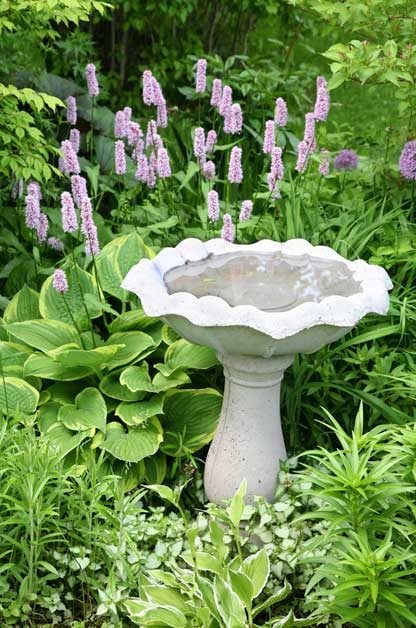
Water can be even more effective than food in luring birds close. From the simple to the most decorative, there are countless bird bath styles available. Or you can craft your own out of almost anything.
Be sure to change your water every day. It can get dirty surprisingly quickly. Also, stagnant water can be a breeding pool for mosquitos and other insects. You should give the bird bath a good scrubbing on occasion as well.
Fountains, spinners or misters are a nice touch; the movement can help attract more birds. It’s worth adding a couple of rocks to your bird bath, too. Beyond keeping the bath securely in place, they’ll give the birds a better perch to drink or bathe from. Remember that most birds don’t want water that is too deep. A couple of inches is plenty.
In winter you can add a bird bath heater. Some of these perform better than others, so check for reviews. Some of the most effective heaters are built right into the bird bath. There are also separate heaters that sit in most any tray. Remember that glass birdbaths should be brought in for the winter.
Small Plants Do Double Duty
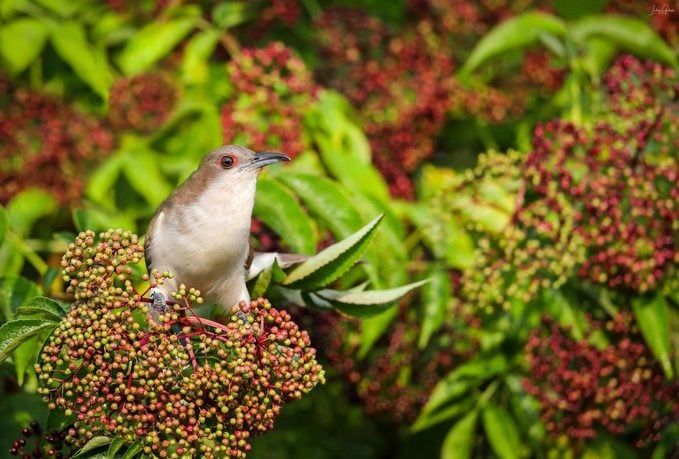
It’s easy to overlook the importance of shelter to backyard birding. Sure, we all know birds need places to nest, but having some backyard plant cover can attract even more birds to your space all year.
Giving birds an easy place to retreat to helps protect them from predators. Some people retire the Christmas tree to the backyard so it can provide shelter year round. Sprinkling some cracked corn or sunflower seed near the shelter might help entice species like thrashers, towhees and juncos. These birds rarely come to more traditional feeders but feel right at home feeding on the ground near cover.
Consider planting a native berry producer. With a berry-producing tree or shrub, you’ll offer both protection and a bonus food source. Many shrubs provide good cover for birds.
Even a container shrub will help. Don’t be surprised if a wren finds it a suitable place to build a nest. You can also put up a platform for robins or phoebes to use.
Especially with small backyards, it’s important to remember that your space is just a part of the bird’s home range. But with a little imagination, you can make the tiniest of yards an ideal habitat.
No Backyard for Birding? No Problem!
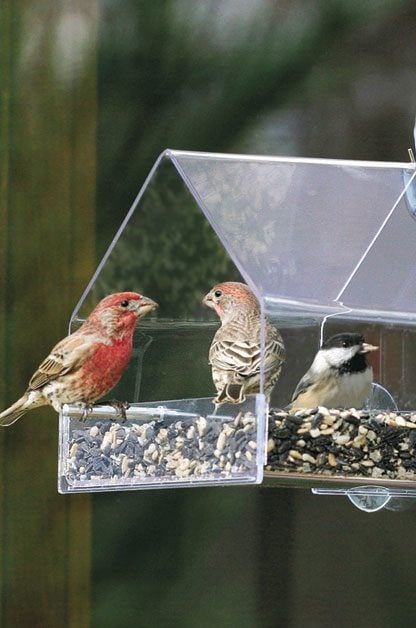
Even if you live in an apartment building or simply don’t have a yard, you can still experience the joys of backyard birding. You’ll be relying on surrounding habitats, but with careful observation, you can spot birds. Here’s how:
- Window feeders. There are feeders you can put right on your windows with suction cups. I use a suction cup suet feeder to get close-up looks at chickadees, nuthatches and woodpeckers.
- Hanging basket. Try displaying some hummingbird-friendly flowers. In addition to hummers, you could also attract beautiful butterflies and maybe even a sphinx moth.
- Invest in optics. I can easily see migrating warblers in the treetops from my apartment window. I also watch flocks of ducks, geese, gulls and even swans flying along Lake Michigan.
- Look to the sky. If you live in a high-rise building, your best bet is to look up for flying birds and not down toward the feeders. Peregrine falcons and red-tailed hawks patrol the skies in many urban areas, so keep your eyes to the sky.
- Focus on migration. It’s always exciting to host new visitors. Spring and fall migration offer the best chances of something unexpected showing up in your area.
